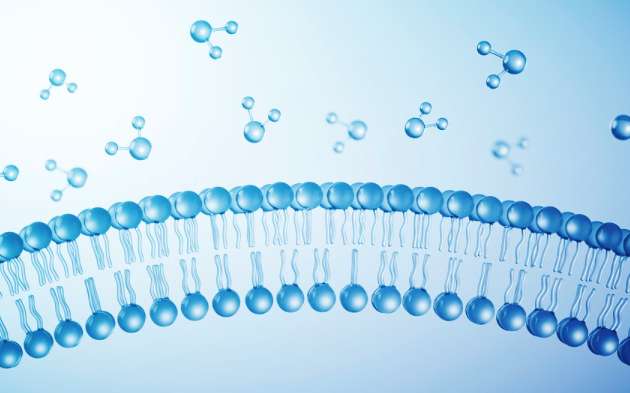On May 21, 2024, ICH officially released the Step 4 final version of the M12 "Drug Interaction Studies" guideline, marking another major advancement in global standards for drug-drug interaction (DDI) research. This guideline aims to harmonize design, execution, and interpretation approaches for enzyme- and transporter-mediated pharmacokinetic drug-drug interaction studies across regions, providing consistent recommendations for drug interaction evaluation during investigational drug development.
ICH M12 underwent significant revisions from draft to final version. On August 2, 2024, the US Food and Drug Administration (FDA) formally adopted it while issuing a supporting document, "M12 Drug Interaction Studies: Questions & Answers" to clarify key concepts. The guideline officially took effect in the EU on November 30, 2024, replacing the previous European Medicines Agency (EMA) guideline on drug interaction studies. Chinese National Medical Products Administration (NMPA) implemented the guideline on October 29, 2024[1].
This article will focus on the “In Vitro Evaluation of Enzyme-Mediated Interactions” section, highlighting major changes to the guideline and key differences from regional guidelines, and providing recommendations for experimental design following these revisions.
4 Key Updates of ICH M12 Drug Interaction Guideline
#1 Terminology Updates and Harmonization from Draft to Final Version
The final version implemented critical terminology updates: replacing "victim drug" and "perpetrator drug" used in the draft with "object drug" (substrate) and "precipitant drug" (perpetrator), respectively. This revision adopts more neutral and scientific terminology, facilitating unified communication among researchers worldwide. Additionally, the guideline added a glossary in the appendix to ensure conceptual clarity.
#2 Optimization of Protein Binding Assessment Methods
The final version incorporated dedicated sections on protein binding assessment, emphasizing that “measured fu,p for highly bound drugs can be used in the Modeling by using a validated protein binding assay”. It provides enhanced details for evaluating highly protein-bound drugs. These changes enable more accurate clinical drug-drug interaction risk prediction.
#3 Updates to Time-Dependent Inhibition (TDI) Research Methods
The final version added non-dilution methods to time-dependent inhibition (TDI) evaluation approaches, formally recognizing their importance in TDI studies. Addressing this update, WuXi AppTec DMPK team compared the two methods (dilution and non-dilution) using different degrees of TDI inhibitors for various CYP isoforms in our lab. All seven common isoforms were tested using non-, moderate/weak, and potent time-dependent inhibitors. (Table 1). To evaluate the comparability of time-dependent inhibition determinations between the two methods (dilution and non-dilution) and in vivo values, we used the Kappa statistic, a measure of inter-rater reliability for categorical variables. A Kappa value between 0.8 and 1.0 suggests a high level of system consistency. Both methods showed strong agreement with in vivo data, with the non-dilution method producing predictions without false positives or negatives (Figure 1). However, it’s important to note that even with the same non-dilution method, prediction accuracies may vary across labs due to differing experimental conditions. In conclusion, the non-dilution method generates higher accuracy with less microsome consumption. These findings have also been presented as a poster at the 26th ISSX/39th JSSX conference in 2024:
Table 1. The commercially available compounds used in the comparison of the non-dilution and dilution methods.
P450 Enzyme | Inhibitors |
CYP1A2 | Fluvoxamine* |
Ticlopidine** | |
Furafylline*** | |
CYP2B6 | Montelukast* |
Sertraline** | |
Ticlopidine*** | |
CYP2C8 | Montelukast* |
Phenelzine** | |
Gemfibrozil 1-O-β-Glucuronide*** | |
CYP2C9 | Sulfaphenazole* |
Phenelzine** | |
Tienilic Acid*** | |
CYP2C19 | (+)-N-3-Benzylnirvanol* |
Fluoxetine*** | |
Ticlopidine*** | |
CYP2D6 | Fluvoxamine* |
Quinidine* | |
Mibefradil** | |
Paroxetine*** | |
CYP3A-M | Ticlopidine* |
Ketoconazole* | |
Paroxetine** | |
Azamulin*** | |
Verapamil*** | |
CYP3A-T | Ticlopidine* |
Ketoconazole* | |
Paroxetine** | |
Azamulin*** | |
Verapamil*** |
*: No TDI; **: Moderate/Weak TDI;***: Potent TDI/FDA recommended TDI inhibitor.

Figure 1. Concordance analysis (kappa statistic) between dilution and non-dilution methods versus in vivo outcomes.
#4 ICH M12 vs. Regional Guidelines: Key Differences
Differences from FDA Guidance
Compared to the 2020 FDA guideline, the ICH M12 final version differs in:
Heightened emphasis on metabolite drug interaction risk assessment requirements and strategies
Updated Recommendations for Metabolic Enzyme Phenotyping.
The FDA guideline states, “The sponsor should use both methods to identify the specific enzymes responsible for a drug's metabolism.” In contrast, the final version of ICH M12 describes it as, “Reaction phenotyping can be done in HLM (human liver microsomes) or hepatocytes using selective enzyme inhibitors and/or in human recombinant enzymes.” To illustrate the limitations of relying on a single method, I’ll share a case study.
A test article was initially evaluated using only human recombinant enzymes for enzyme phenotyping studies. The results indicated that CYP2C8, CYP2C9, and CYP2D6 were involved in the compound’s metabolism (Figure 2. A). However, this finding did not align with clinical observations. Subsequently, at WuXi AppTec DMPK, the same compound was assessed using HLM with selective enzyme inhibitors, revealing that CYP3A was the primary metabolic enzyme, consistent with clinical data (Figure 2. B). WuXi AppTec DMPK team conducted enzyme phenotyping studies under optimized conditions using human recombinant enzymes, which also confirmed CYP3A as the primary metabolic enzyme (Figure 2. C). This case highlights that relying on a single method may yield unreliable results, whereas employing both methods provide mutual verification and greater confidence in the findings.

Figure 2. A case study of enzyme phenotyping.
Differences from EMA Guidance
Key differences from previous EU guidelines include:
Divergent criteria for translating in vitro results to clinical recommendations
Differences from NMPA Guidance
Compared to China’s previous guidelines, the ICH M12 final version strengthens:
Recommendations for earlier drug-drug interaction risk assessment timelines
Systematic requirements for metabolite-related drug-drug interaction evaluation
Integrated Research Framework for Enzyme-Mediated Interactions Based on ICH M12
Enzyme Phenotyping of Investigational Drugs
Identification of the specific enzymes contributing to a drug’s main elimination pathways can be investigated using human recombinant CYP enzymes or multi-enzyme systems such as human liver microsomes, S9 fraction, and hepatocytes. The investigations of drug as a substrate typically begin with the most common CYP enzymes involved in drug metabolism: CYP1A2, CYP2B6, CYP2C8, CYP2C9, CYP2C19, CYP2D6, and CYP3A (CYP3A4 and CYP3A5).
The phenotyping assay is designed and conducted based on the information from metabolite identification studies and metabolic stability assays. Information about the major metabolic pathways and the knowledge of enzymatic reactions guide the design of enzyme reaction phenotyping assays. If an NCE undergoes direct conjugation, involvement of enzymes such as UDP-glucuronosyltransferase (UGT), sulfotransferase (SULT), Glutathione-S-transferase (GST), or N-acetyltransferase (NAT) is evaluated based on the major metabolites identified. If an NCE undergoes NADPH-independent metabolism, involvement of enzymes such as aldehyde oxidase (AO), xanthine oxidase (XO), monoamine oxidase (MAO), carboxylesterase (CES), alcohol dehydrogenase (ADH), or aldehyde dehydrogenase (ALDH) is evaluated based on the NCE structure as well as whether species specific metabolism exists. If an NCE undergoes NADPH-dependent metabolism, involvement of enzymes such as cytochrome P450 (CYP)s or flavin-containing monooxygenase (FMO)s is evaluated based on the knowledge of enzymatic reactions and pre-test results. If data suggests that contribution from CYPs is the major metabolic pathway, two methods are used to confirm whether the major cytochrome P450 enzymes (CYP1A2, CYP2B6, CYP2C8, CYP2C9, CYP2C19, CYP2D6, and CYP3A) are responsible for the drug metabolism. Additional CYPs (CYP2A6, CYP2J2, CYP4F2, CYP2E1, CYP1A1, CYP17A, and CYP19A) should also be tested if the major DMEs from the two methods mentioned above are inconsistent with each other. This has been presented as a poster at the AAPS named “Evidence-based strategies for the characterization of New Chemical Entity (NCE) in vitro CYP and Non-CYP enzyme reaction phenotyping at the development stage.”
Investigational Drug as an Enzyme Inhibitor
CYP Reversible Inhibition Studies
Design: IC50 determination using isoform-specific substrates
Targets: Major CYP enzymes (1A2, 2B6, 2C8, 2C9, 2C19, 2D6, 3A)
Criteria:
- Cmax,u/Kᵢ,u ≥0.02 → Proceed to clinical drug interaction study
- 0.1 > Cmax,u/Kᵢ,u ≥0.02 → Consider PBPK modeling
CYP Time-Dependent Inhibition (TDI) Studies
Design: Measure IC50 shift, AUC shift, or Kinact/KI
Targets: Major CYP enzymes (particularly 3A4, 1A2, 2C19)
Criteria:
- IC50 shift ratio ≥1.5 or R-value ≥1.1 → Further evaluation
- R-value ≥1.25 → Usually requires a clinical drug interaction study
UGT Inhibition Studies
Design: IC50 determination using recombinant UGTs or HLMs
Targets: Major UGT enzymes (UGT1A1, UGT1A4, UGT1A9, UGT2B7, and UGT2B15)
Criteria: Follow CYP inhibition decision standards with clinical relevance assessment
Investigational Drug as CYP Enzyme Inducer
Study Design and Method Selection
Method 1: Basic mRNA Fold-Change Approach
- Measure mRNA level changes for CYP1A2, 2B6, 3A4
- Compare with positive controls to calculate the relative induction score
Method 2: Correlation Approach (e.g., RIS)
- Establish mRNA-enzyme activity correlation
- Improve prediction of in vivo induction effects
Method 3: Basic Kinetic Modeling
- Suitable for complex inhibition-induction coexistence scenarios
Decision Criteria and Follow-up Studies
R3 value <0.8 → Consider clinical induction risk
PBPK-predicted AUC ratio <0.8 → Consider clinical drug interaction study
Required Studies for Metabolites
Metabolite as Substrate Evaluation
Conduct enzyme phenotyping for metabolites with:
- Exposure ≥10% of parent drug AND
- Significant pharmacological activity
Primary focus: Clearance pathways and potential drug interaction risks
Identification of the enzyme(s) responsible for the formation and elimination of the active metabolite should be studied in the same manner as the identification of the enzymes involved in the elimination of the parent drug.
Metabolite as Inhibitor Evaluation
Required when metabolites show significant steady-state exposure:
- ≥25% of parent drug exposure OR
- High absolute concentrations
Perform reversible/time-dependent inhibition studies identical to the parent drug
If in vitro assessments suggest that the parent drug alone does not inhibit major CYP enzymes/transporters or is not expected to inhibit enzymes/transporters clinically, drug interaction liability due to metabolites as inhibitors can still exist.
If in vitro assessments suggest that the parent drug inhibits major CYP enzymes and transporters, and clinical drug interaction studies are planned, in vitro assessments of metabolites as inhibitors of those enzymes or transporters may not be required.
Metabolite as Inducer Evaluation
Required for metabolites with significant steady-state exposure
Assess induction potential on CYP enzymes (especially CYP3A4)
While metabolites can induce CYP enzymes, the in vitro evaluation of the parent drug as a potential inducer could also reflect induction by metabolites because metabolites can be generated during incubation of the parent drug with hepatocytes. However, when the drug is a prodrug or when a metabolite is mainly formed extrahepatically, in vitro evaluation of a metabolite’s induction potential on CYP enzymes is recommended.
Conclusions and Recommendations
The ICH M12 final version establishes a comprehensive, systematic framework for drug-drug interaction studies, clarifying research pathways and decision points from in vitro to clinical stages. Based on our experience, we recommend:
Proactive Planning: Initiate drug interaction strategy development during early drug discovery, particularly for defining primary metabolic pathways
Risk-Based Tiered Assessment: Prioritize evaluation of high-risk drug interaction scenarios
Integrated Approaches: Combine in vitro experiments, clinical studies, and modeling to build complete drug interaction assessment systems
Continuous Updates: Iteratively refine drug interaction risk assessments and adjust development strategies
Adherence to ICH M12 and implementation of this integrated framework enables more effective drug interaction risk evaluation, supporting scientific decision-making for drug development and clinical medication safety.
Authors: Lifang Jiang, Huan Liu, Genfu Chen
Talk to a WuXi AppTec expert today to get the support you need to achieve your drug development goals.
Committed to accelerating drug discovery and development, we offer a full range of discovery screening, preclinical development, clinical drug metabolism, and pharmacokinetic (DMPK) platforms and services. With research facilities in the United States (New Jersey) and China (Shanghai, Suzhou, Nanjing, and Nantong), 1,000+ scientists, and over fifteen years of experience in Investigational New Drug (IND) application, our DMPK team at WuXi AppTec are serving 1,600+ global clients, and have successfully supported 1,700+ IND applications.
Reference
[1] Reynolds, Kellie et al. “ICH M12 Drug Interaction Studies: Summary of the Efforts to Achieve Global Convergence.” Clinical pharmacology and therapeutics vol. 118,1 (2025): 33-44. doi:10.1002/cpt.3625
[2] FDA guidance for industry: In Vitro Drug Interaction Studies-Cytochrome P450 Enzyme- and Transporter-Mediated Drug Interactions, January 2020.
[3] EMA guideline: Guideline on the Investigation of Drug Interactions, 2013.
[4] NMPA guideline: Guideline on the Investigation of Drug Interactions, January 2021.
[5] ICH guidance: M12 Drug Interaction Studies, May 2024.
Stay Connected
Keep up with the latest news and insights.













